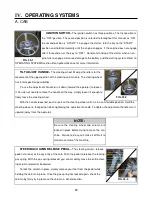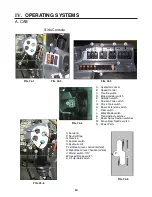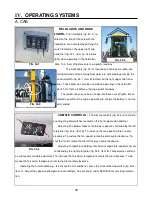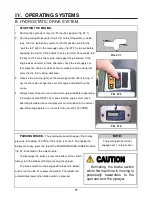
IV.
OPERATING SYSTEMS
23
NOTE:
Be sure the steering wheel and column are
locked in place before trying to move the ma-
chine. Failure to do so will make it difficult to
maintain control of the machine.
IGNITION SWITCH–
The ignition switch has three positions. The first position is
the “OFF” position. The second position is referred to throughout this manual as “ON”,
the second position is “START”. To engage the starter, turn the key to the “START”
position and hold momentarily until the engine engages. If the engine does not engage
after 15 seconds, turn the key to “OFF”. Constant cranking of the starter when an en-
gine fails to engage will cause damage to the battery and the starting system. Refer to
OPERATING SYSTEMS section B on hydrostatic drive for more information.
FIG. 23-1
TILT ADJUST HANDLE-
The steering wheel tilt adjust handle is for the
movement of the upper portion of the steering column only. The steering wheel
has infinite position possibilities.
To use the adjustment handle turn it down (toward the operator) to loosen
it. You do not need to remove the handle all the way, simply loosen it enough to
freely move the steering wheel.
With the handle loosened, push or pull on the steering wheel until it is in a comfortable position. Hold the
steering wheel in that position while tightening the adjustment handle. To tighten the adjustment handle turn it
upward (away from the operator).
STEERING COLUMN RELEASE PEDAL–
The steering column release
pedal is for easy exit/ easy entry of the cab. Push the pedal to release the locking
gas spring. With the gas spring released, you can smoothly move the entire steer-
ing column forward or backward.
To lock the column in place, simply remove your foot from the pedal while
holding the column in place. Once the gas spring has locked again, check the
column by firmly trying to move the column in either direction.
A. CAB
FIG. 23-2
FIG. 23-3
















































